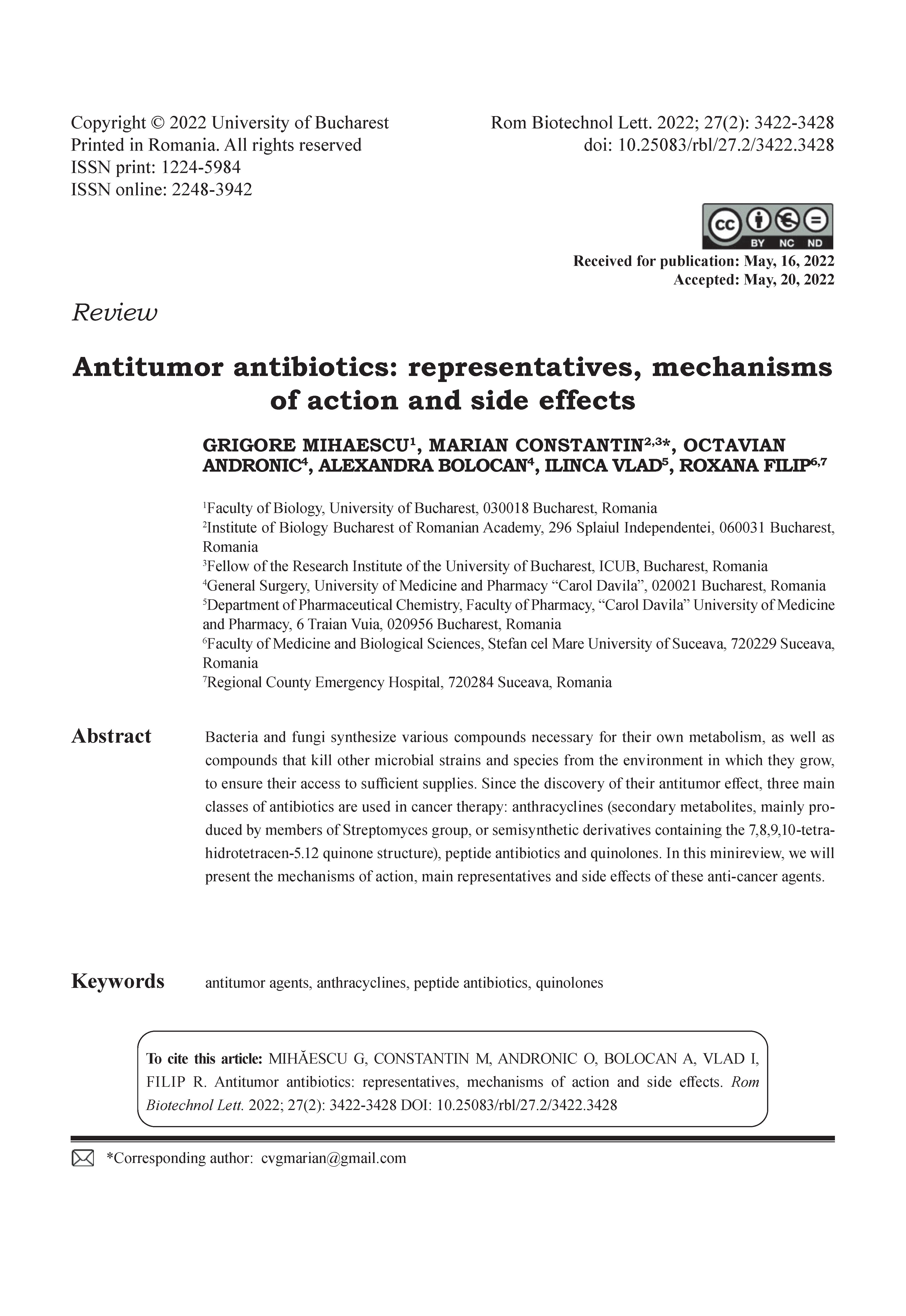Antitumor antibiotics: representatives, mechanisms of action and side effects
DOI:
https://doi.org/10.25083/rbl/27.2/3422.3428Keywords:
antitumor agents, anthracyclines, peptide antibiotics, quinolonesAbstract
Bacteria and fungi synthesize various compounds necessary for their own metabolism, as well as compounds that kill other microbial strains and species from the environment in which they grow, to ensure their access to sufficient supplies. Since the discovery of their antitumor effect, three main classes of antibiotics are used in cancer therapy: anthracyclines (secondary metabolites, mainly produced by members of Streptomyces group, or semisynthetic derivatives containing the 7,8,9,10-tetrahidrotetracen-5.12 quinone structure), peptide antibiotics and quinolones. In this minireview, we will present the mechanisms of action, main representatives and side effects of these anti-cancer agents.





